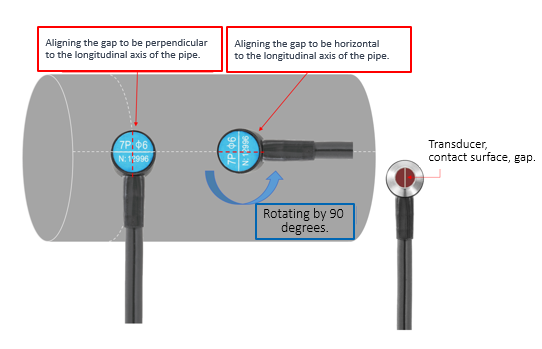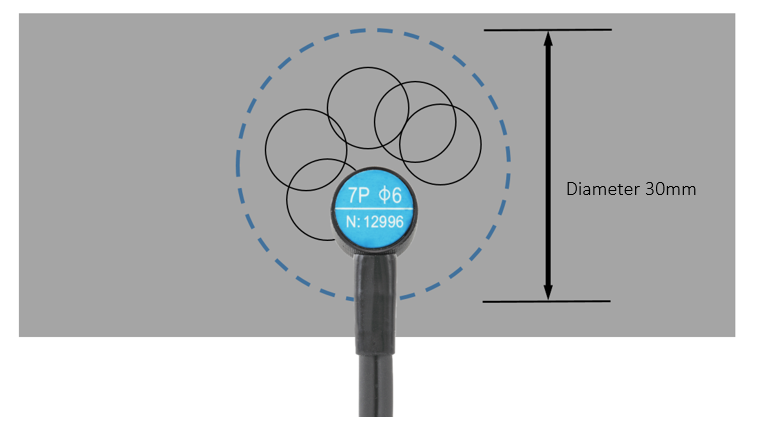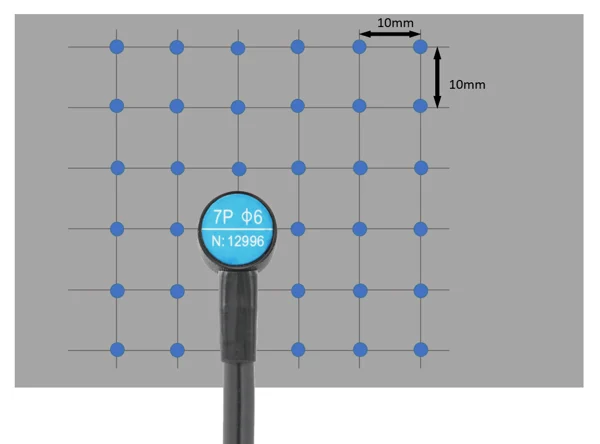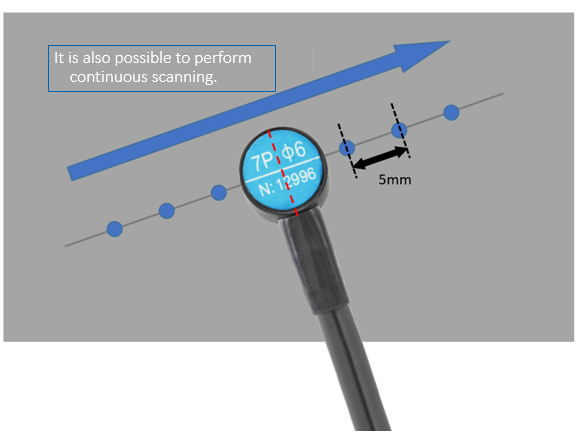AD-3255 The measurement method of an ultrasonic thickness gauge.
In ultrasonic thickness measurement, there are five representative measurement methods:
① Single-point measurement method:
As the name suggests, the transducer is placed on the measurement area only once for the measurement.
When measuring the thickness of a pipe, the orientation of the transducer is crucial.
If the diameter of the pipe is larger than 10 cm, the gap direction should be perpendicular to the longitudinal axis of the pipe.
This method is ideal for measuring objects with minimal corrosion or thinning.
②Two-point measurement method (refer to the diagram below):
For thin pipes, one measurement is taken with the gap perpendicular to the longitudinal axis of the pipe,
and another measurement is taken parallel to it.
The smaller of the two measured values is considered the thickness at that point.
For measurements other than pipes, after the first measurement,
the transducer is rotated by 90 degrees and the same location is measured again.
This method is ideal for accurate assessment of thinning compared to the single-point measurement method
and is particularly suitable for measuring locations where corrosion progression is anticipated.
(Note: The diagram was not provided, so please refer to the visual representation for a better understanding.)

③Multi-point measurement method (refer to the diagram below):
This method involves conducting multiple measurements within a circular region centered around the measurement point.
The smallest value among the measurements is considered as the measured value.
The size of the circular (or elliptical) measurement area is determined based on the extent of corrosion or thinning.
If there are no specific instructions regarding the measurement range,
it is assumed to be within a 30mm diameter circle centered around the measurement point.
This method is effective for measuring areas where localized corrosion is progressing.
(Note: The diagram was not provided, so please refer to the visual representation for a better understanding.)

④Precision measurement method (refer to the diagram below):
If there are no specific instructions regarding the measurement range,
divide an area of 50x50mm centered around the measurement point into
a grid pattern with 10mm intervals and measure at the intersection points.
The measurement results can be displayed in a planar representation such as contour lines,
or the thickness and position of significant thinning areas can be recorded.
This measurement method is carried out to assess the distribution of thinning,
particularly in areas where significant corrosion progression is expected.
(Note: The diagram was not provided, so please refer to the visual representation for a better understanding.)

⑤Continuous measurement method (Scan) (refer to the diagram below):
Measurements are performed at 5mm intervals along the measurement line (if no specific instructions are given)
or continuously by scanning.
The orientation of the gap is kept perpendicular to the measurement line.
Record the measured values and their positions below a predetermined thickness,
or display the thickness variation along the measurement line in a cross-sectional representation.
This method is carried out to examine thickness variations and can be applied to infer the condition of the opposite side based on
the thickness changes in the measured cross-section.
(Note: The diagram was not provided, so please refer to the visual representation for a better understanding.)

With AD-3255, as it is equipped with a scanning mode,
it allows for easy implementation of the continuous measurement method, enabling the measurement of thickness over a wide range.
